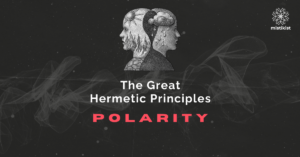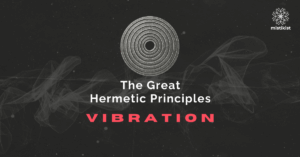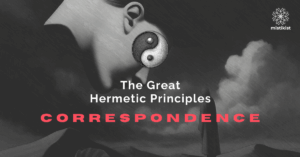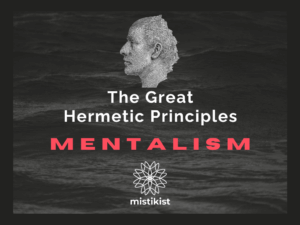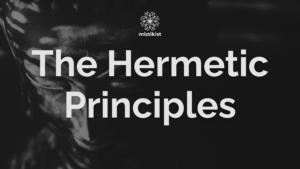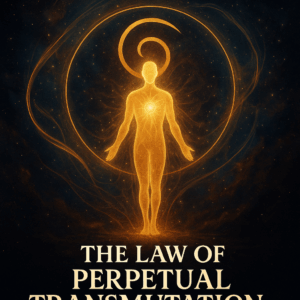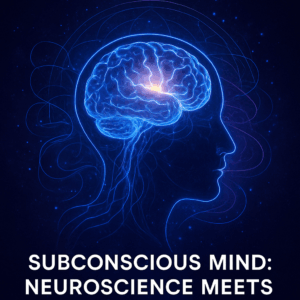The subconscious mind comprises all the brain’s processing outside our immediate awareness, shaping emotions, habits, and intuition. Modern neuroscience confirms that much of what we “sense” never enters conscious thought. For example, people with cortical blindness can still react faster to unseen fearful faces via a direct eye–amygdala pathway – a “high-speed” subconscious route that alerts the brain to danger even without conscious vision. As Douglas Fields writes, “the brain is able to take in much more information subconsciously than we can possibly hold in our conscious mind”. This hidden brain processing underlies everything from automatic skills (riding a bike without thinking) to emotional reflexes and bodily regulation.
Neuroscientists increasingly map these “hidden circuits” of the brain. For instance, the amygdala can register danger signals (like fearful faces) without us even noticing – explaining how nightmares or gut feelings arise before rational thought kicks in. Memory systems also operate below awareness: implicit learning, priming, and skill acquisition depend on subconscious encoding (as in first learning to play an instrument or memorizing a route). In sum, the subconscious handles vast sensory, emotional, and memory loads “beneath” consciousness, priming our reactions and colors our experience without us even knowing.
Neuroscience of the Hidden Mind
Brain imaging and cognitive studies have begun to reveal how unconscious processes work. One key insight is that the brain’s large-scale networks shape awareness. The default mode network (DMN) – anchored in the medial prefrontal cortex (mPFC) and posterior cingulate cortex (PCC) – underlies mind-wandering, self-referential thought and unconstrained stream-of-consciousness. In contrast, task-positive networks (like the fronto-parietal attention and salience networks) guide focused attention and external awareness. Contemporary research shows that mental training can shift the balance between these networks. For example, experienced meditators show reduced DMN activity and increased coupling of attention-control regions at rest.
Figure: Brain network connectivity differences in experienced meditators (Brewer et al. PNAS 2011). The default-mode network (blue) is less active during meditation, while fronto-cingulate control areas (red/orange) show stronger connectivity. Meditation training quiets habitual self-referential thinking by dampening mPFC/PCC activation, while strengthening links between the PCC and prefrontal regions involved in self-monitoring and executive control. In other words, habitual mind-wandering is de-emphasized, and goal-directed attention networks are enhanced. This neural shift is consistent with the subjective experience of “living more in the present” and less in running mental narratives.
Beyond DMN dynamics, neuroscience also highlights emotional and regulatory hubs in the subconscious. The anterior cingulate cortex (ACC) is repeatedly implicated: it mediates conflict monitoring and cognitive control. Reviews note that mindfulness practice “enhances attention” by engaging the ACC, with consistent changes in its activity and even structural thickness. Likewise, mindfulness training “improves emotion regulation and reduces stress” by modulating fronto-limbic networks (connections between frontal cortex and limbic emotion centers). In simple terms, sustained meditation rewires the brain – thickening attention networks, toning down reactivity, and integrating top-down control into lower emotional centers. A recent meta-review confirms this: long-term meditators show neuroplasticity across brain systems – increased cortical thickness, reduced amygdala reactivity to stress, and improved overall connectivity. All told, modern imaging supports ancient spiritual claims: contemplative practice makes the subconscious content (mental chatter, stress) more malleable, while bolstering neural circuits for present-moment awareness and calm.
Meditation and Mindfulness: Tuning the Mind
Spiritual practices like meditation and mindfulness offer a practical bridge between science and the subconscious. These disciplines train people to observe thoughts and sensations nonjudgmentally, effectively shifting certain processes from “autopilot” to conscious view. Neuroscience has begun to map how these practices work in the brain. For example, Yale researchers found that regardless of meditation type, experienced meditators showed lower activation of the DMN’s core hubs (mPFC and PCC) compared to novices. In parallel, meditators exhibited stronger functional connectivity between the PCC and regions of the prefrontal cortex involved in attention and self-monitoring. In practice, this means meditation quiets the part of the mind linked to mind-wandering and self-referential thought, while strengthening circuits for maintaining focus and emotional regulation.
Critically, these neural changes correlate with subjective outcomes. Brewers et al. report that differences in brain patterns “are consistent with decreased mind-wandering”. In other words, as people train meditation, the subconscious rumination that ordinarily populates thought begins to recede. Tang and Posner (2015) summarize that mindfulness “enhances attention” via the anterior cingulate cortex and “improves emotion regulation” through balanced engagement of frontal–limbic networks. Anecdotally, meditators often describe a growing awareness of previously automatic impulses – effectively bringing parts of the subconscious into the light of consciousness. Thus, through targeted practice, one can observe and even gently reshape habits of mind.
Mindfulness also has measurable effects on the brain’s structure. Longitudinal studies document that even short-term training (weeks to months) can increase grey matter in regions related to attention and sensory processing, and decrease volume in the stress-reactive amygdala. These changes reflect the brain’s plasticity: it can rewire itself in response to the focus and calm cultivated by meditation. In summary, research shows that spiritual practices like mindfulness actively engage the neurobiology of the subconscious – quieting default-mode activity, enhancing control networks, and improving emotional resilience.
Dreams and the Subconscious
Another profound overlap between science and spirituality is dreamwork. Many traditions (from ancient Egypt to Jungian psychology) view dreams as messages from the deeper self or collective unconscious. Modern neuroscience offers a complementary view: dreams are a window into the sleeping brain’s processing of emotions and memories. Neuroimaging studies confirm that during REM sleep (when vivid dreams usually occur), the amygdala, hippocampus, and anterior cingulate cortex light up far more than in waking. These areas govern emotions, memory encoding, and associative thinking.
Research suggests dreams serve to integrate and rehearse emotional experiences. For example, multiple studies have shown that REM sleep plays a pivotal role in consolidating emotional memories. Dream content often features heightened emotional intensity (especially negative emotions like fear or anxiety) and frequently reflects recent waking concerns or experiences. From a neuroscientific stance, this makes sense: the brain is effectively running “overdrive” on emotional-limbic circuits during REM to process salient events from the day. In practical terms, this may help with learning from experiences and regulating mood. Clinically, we see that disrupted dreaming (especially of traumatic content) correlates with PTSD and depression, highlighting how dream processing is linked to mental health.
Dreamwork techniques—whether Jungian analysis of symbols or simply mindful recall of dreams—can therefore be seen as attempts to tap into the subconscious processing of the sleeping brain. While Jung posited archetypal symbolism in a collective unconscious, neuroscience implies dreams draw on personal memory fragments and emotional patterns. Both perspectives agree that dreams contain insights unavailable in waking thought. In essence, when spiritual traditions encourage interpreting dreams or setting intentions before sleep, they may be leveraging this natural “offline” mode of the subconscious brain to gain insight or even subtle guidance in problem-solving.
Energy Healing and the Biofield
Finally, many spiritual practices involve energy healing or work with subtle “life forces” (Qi, prana, aura, etc.). Scientific validation of such concepts is still emerging, but intriguing connections to neuroscience and physiology are being explored. At minimum, energy therapies induce a strong relaxation response. For instance, studies report that Reiki (a hands-on energy healing technique) reliably activates the parasympathetic nervous system, lowering heart rate and cortisol (stress hormone) levels. Meta-analyses of clinical trials find Reiki and similar biofield therapies can reduce anxiety, improve sleep, and even alleviate pain better than placebo controls. One systematic review concludes Reiki produces significant benefits for stress, depression, and anxiety above placebo.
How might this relate to the subconscious and brain? One idea is that “energetic” healing works by modulating the mind-body feedback loops. When an energy practitioner places hands on a patient, the client’s brain may register touch and intention cues subconsciously, leading to measurable brain shifts. For example, hand placement and gentle touch can up-regulate vagal (parasympathetic) activity, immediately altering brain networks linked to emotion and pain perception. In effect, the patient’s subconscious expectation and the body’s relaxation reflex combine to promote healing states. This aligns with the ancient notion that intention can steer life energy: scientifically, strong belief and expectation (subconscious states) are known to trigger placebo-like healing cascades in the brain and body. In short, while “energy fields” remain hard to measure directly, neuroscience shows that thoughts, attention and touch do influence physiology – bridging body and mind in ways that partially echo spiritual concepts of subtle energy.
Integrating Science and Spirit
The convergence of neuroscience and spirituality paints a holistic picture: the subconscious mind is neither mystical ether nor mere machine, but an active biological substrate shaped by both evolution and experience. Spiritual practices like meditation, prayer, or energy work appear to tune this substrate. By quieting the incessant chatter of the DMN and strengthening networks of awareness, meditation acts like a “software update” for the brain. Practices that connect conscious intention with unconscious processing – such as mindful dream journaling or compassionate visualization – may accelerate the brain’s natural tendency to self-organize emotional memories and habits.
Cutting-edge neuroscience thus provides a language for ancient wisdom. When a meditator speaks of witnessing thoughts without attachment, science sees a brain that has down-regulated default-mode activity and up-regulated self-monitoring circuits. When an energy healer describes guiding a subtle field, researchers measure relaxing shifts in autonomic tone and brain chemistry. When a dreamer finds insight in a night vision, neuroscientists note the amygdala and hippocampus replaying emotional memories.
In sum, the subconscious mind sits at a crossroads of objective neuroscience and subjective spirituality. By exploring both angles – understanding neural pathways and respecting introspective traditions – we gain a richer grasp of what it means to be human. Both domains agree that vast realms of experience lie beneath our awareness, yet profoundly shape our lives. As research advances, we are likely to see even deeper links: how the brain’s hidden dynamics underwrite mystical states, how intention can rewire neural circuits, and how ancient healing rituals can be understood as harnessing the plasticity of body and mind. The dialogue between science and spirit is just beginning, but it is already revealing that the boundary between the conscious and subconscious is not a wall, but a spectrum – one we can navigate with both reason and reverence.




